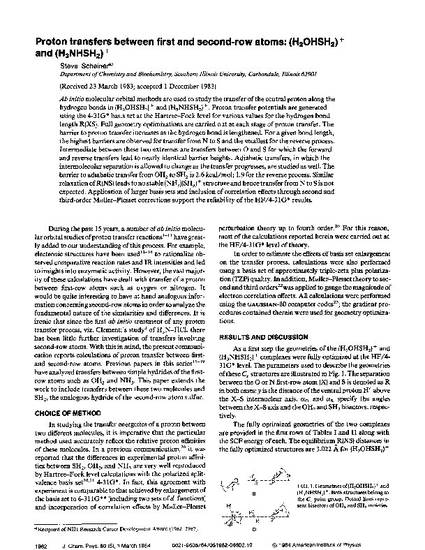
Ab initio molecular orbital methods are used to study the transfer of the central proton along the hydrogen bonds in (H2OHSH2)+ and (H3NHSH2)+. Proton transfer potentials are generated using the 4‐31G∗ basis set at the Hartree–Fock level for various values for the hydrogen bond length R(XS). Full geometry optimizations are carried out at each stage of proton transfer. The barrier to proton transfer increases as the hydrogen bond is lengthened. For a given bond length, the highest barriers are observed for transfer from N to S and the smallest for the reverse process. Intermediate between these two extremes are transfers between O and S for which the forward and reverse transfers lead to nearly identical barrier heights. Adiabatic transfers, in which the intermolecular separation is allowed to change as the transfer progresses, are studied as well. The barrier to adiabatic transfer from OH2 to SH2 is 2.6 kcal/mol; 1.9 for the reverse process. Similar relaxation of R(NS) leads to no stable (NH3)(SH3)+ structure and hence transfer from N to S is not expected. Application of larger basis sets and inclusion of correlation effects through second and third‐order M≂ller–Plesset corrections support the reliability of the HF/4‐31G∗ results.

Originally published by American Institute of Physics in the Journal of Chemical Physics.
Publisher's PDF can be accessed through the remote link.